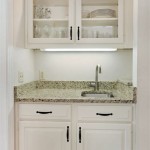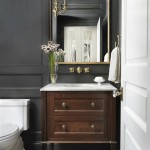Do You Have to Finish Unfinished Cabinets Before Painting?
Unveiling the beauty of unfinished cabinets lies in the versatility they offer. Whether you're yearning for a fresh coat of paint or a rich stain, understanding the process is crucial. This guide will explore the intricacies of finishing unfinished cabinets, equipping you with the knowledge to enhance your space effortlessly.
Assess the Cabinet Material
Identifying the material of your unfinished cabinets is paramount. While painting or staining is suitable for most types of wood, certain materials may require specific preparation. For instance, MDF (medium-density fiberboard) cabinets benefit from a coat of primer before painting to minimize absorption and ensure even coverage.
Sanding: Smoothing the Surface
Sanding is essential to create a smooth and receptive surface for your paint or stain. Start with a coarse-grit sandpaper to remove any imperfections or raised grain. Gradually transition to finer grits, ending with a 220-grit for an ultra-smooth finish. Don't skip this step, as proper sanding ensures optimal adhesion.
Priming: Enhancing Adhesion
Applying a coat of primer provides a solid foundation for your paint or stain. It conceals imperfections, provides a barrier against tannins (which can discolor paint), and improves adhesion. For unfinished cabinets, a shellac-based primer is ideal as it prevents bleed-through and promotes durability.
Painting: Artistic Expression
With your cabinets primed and sanded, it's time to unleash your creativity with paint. Choose a color that complements your décor and apply thin, even coats. Allow ample drying time between coats to avoid drips or bubbles. For a smooth finish, lightly sand between coats with a fine-grit sandpaper.
Staining: Bringing Out the Wood's Character
Staining allows you to highlight the natural beauty of the wood while enhancing its durability. Begin by cleaning the cabinet surfaces and sanding in the direction of the wood grain, removing any rough edges. Apply the stain in thin, even coats, using a brush or staining pad, and wipe off any excess to prevent blotchiness.
Finishing Touches: Protection and Shine
Once the paint or stain has dried completely, protect it with a clear coat finish. Polyurethane provides a durable, water-resistant coating, while varnish offers a more traditional, glossy finish. Apply two to three coats, sanding lightly between each coat to ensure a flawless sheen.
Conclusion
Finishing unfinished cabinets before painting or staining is not mandatory, but it is highly recommended to ensure optimal results. By following the steps outlined above – sanding, priming, painting or staining, and applying a finish – you can transform your unfinished cabinets into a stunning addition to your home décor. Remember, preparation is key to a professional and long-lasting finish.

How To Paint Unfinished Cabinets Houseful Of Handmade

How To Paint Kitchen Cabinets Without Sanding Or Priming

How To Paint Unfinished Cabinets

What You Need To Know Before Painting Cabinets The Palette Muse

How To Stain Unfinished Cabinets Painting By The Penny

Unlock The Secrets Of Painting Unfinished Cabinets A Comprehensive Guide

How To Stain Unfinished Cabinets Painting By The Penny

How To Clean Prep Wood Kitchen Cabinets Before Painting Do Dodson Designs

All You Need To Know About Unfinished Cabinets Cc

How To Paint Kitchen Cabinets A Step By Guide Confessions Of Serial Do It Yourselfer
Related Posts








